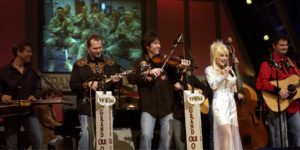Study Unit
Materials

With its roots in the folk music of the Appalachian mountain states, country music has grown to find an evergrowing foothold in American musical culture. Through many sub-genres and variances in instrumentation, country music has evolved for almost a century. During that time, it has broadened to incorporate the sound of western music, popular, rock, and rap music. This unit explores the uniqueness of each of the sub-genres, their common and distinct characteristics, and important influencers since the early 20th century. Students will also develop the listening skills necessary to distinguish between various styles, instruments, and sounds of country & western music.
What will you learn in this unit?
- Understand that in the birth and evolution of country & western music, many sub-genres developed that possessed their own characteristics as well as common themes and musical elements.
- Discuss the influence of folk music from specific geographical regions in the birth and evolution of country & western music.
- Explore the instrumentation of country & western music.
- Describe some of the characteristics of country & western music and the forms of music composed.
- Talk about a few of the influential composers and performers of country & western music.
- Consider the impact of country & western on current American culture.
Study Unit Content
Expand All
Chapter Content
0% Complete
0/2 Steps
Chapter Content
0% Complete
0/2 Steps
Chapter Content
0% Complete
0/3 Steps
Chapter Content
0% Complete
0/4 Steps
Chapter Content
0% Complete
0/2 Steps
Login
Accessing this course requires a login, please enter your credentials below!